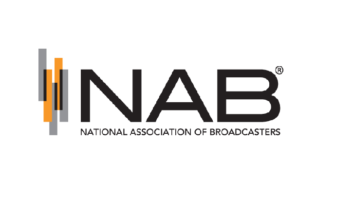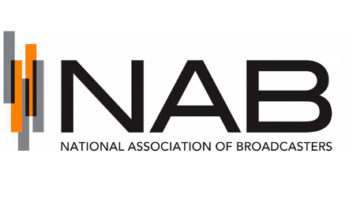Strongly worded comments from the National Association of Broadcasters show just how frustrated the association is with the Federal Communications Commission for commencing the 2022 Quadrennial Review.
The FCC started a new review of broadcast ownership rules even though issues raised in the unfinished 2018 Quadrennial Review still linger. This clearly rankles the NAB.
The group had asked the FCC to pause the new proceeding briefly and first adopt final rules in the prior review. “As of this filing, the commission has not even responded to NAB’s request, and consequently continues to defy Congress’s mandate,” NAB wrote in its comments.
The NAB goes further, saying the new 2022 review “appears to be a waste of time and resources.”
The new FCC public notice raises issues and questions already addressed in earlier quadrennial reviews, NAB wrote. “The commission therefore already should know the answers to a number of the notice’s questions from comments, data and studies NAB and other stakeholders submitted in 2019 and 2021 for the record in the 2018 quadrennial,” it wrote.
The FCC is charged with determining every four years whether its rules continue to be in the public interest. It has indicated it still plans to finish the 2018 review.
The Media Bureau in its public notice says only three structural ownership rules remain subject to the commission’s quadrennial review process: the Local Radio Ownership Rule, the Local Television Ownership Rule and the Dual Network Rule. The new FCC proceeding seeks comments on commission policies on diversity, competition and localism within the context of those three rules.
Rules governing the limits on radio ownership in each market remain largely unchanged since they were first adopted in 1996, according to critics.
Ownership caps are the total number of stations you can own in a market, whereas as a subcap is how many of those stations can be FM or AM. A licensee can own up to eight radio stations in the largest Nielsen markets, but the current subcaps rule limits a licensee to owning no more than five stations in either the AM or FM service in a single market.
NAB attached a variety of economic studies and data in a massive filing to support its position. Previously the association has proposed abolishing AM caps and raising FM limits, saying the rules have failed to keep pace with changes in the media marketplace.
“The FCC cannot retain, consistent with law, local radio and TV ownership rules that predate internet ubiquity, the proliferation of digital devices, and widespread adoption of audio and video streaming services, as well as the growth of social media and Big Tech. Notably, the dominant ad platforms and tech companies, including Alphabet, Amazon and Apple,” NAB commented.
Some smaller broadcasters and other advocacy groups, in contrast, oppose the relaxation of broadcast ownership rules for fear more consolidation will bring fewer ownership opportunities for minorities and women and financially harm those who already own radio properties.
The Multicultural Media, Telecom & Internet Council says eliminating or altering the subcaps rule would result in dramatic devaluation and flight from AM radio stations.
“Not only would this leave millions of Americans without access to local news, information and weather, but it would also deeply diminish the value of AM stations, harming minority and women owners,” MMTC wrote to the FCC.
MMTC says broadcast consolidation drives out women and people of color and decreases their influence on the news and events covered and the people employed.
MMTC says the FCC’s 2022 Report on Broadcast Ownership shows station ownership among women and minorities is already “embarrassingly low.”
On this issue, the NAB argues that repeatedly asking about the effects of ownership restrictions on minority and female ownership yields the same answer: that the FCC’s decades-old rules have never successfully promoted diverse ownership of radio and TV stations but instead hinder new investment in broadcasting.
“And that is because structural ownership rules do not address the main barrier to new entry and diverse ownership in broadcasting — a lack of access to capital — and they exacerbate the FCC’s self-inflicted wound of over-regulation,” NAB wrote.
Meanwhile, the National Association of Black Owned Broadcasters said that maintaining the local radio ownership rule is the only tool the commission has to prevent further consolidation of radio ownership and to prevent the further decline of black radio station ownership.
NABOB says Black American ownership of broadcast stations has declined since 1995 because of Congress’s repeal of the tax certificate policy and the Telecommunications Act of 1996, which allowed massive consolidation in the industry.
The group also believes the relaxation of the radio subcaps rule would hurt AM radio and consumers.
NABOB concludes: “The radio industry has many challenges in today’s fast-changing marketplace. However,
the challenges faced by radio cannot be solved by eliminating or radically relaxing the radio subcaps rule.
“Allowing companies to own eight or 10 FM stations in a market would lead to major consolidation of FM station ownership and would severely undermine the value of AM stations. Existing AM station owners would have the value of their existing assets severely reduced. This would undermine everything the Commission has been attempting to do to revitalize AM radio.”
Recent efforts by the FCC to change its ownership rules have become mired in litigation in the federal courts. In 2021, the Supreme Court reversed a lower court ruling and said the FCC acted properly when it moved to eliminate some radio and TV ownership rules in 2017.
Those changes abolished the newspaper/broadcast and radio/TV cross ownership rules and relaxed several local TV ownership regulations, but did not directly affect local radio subcaps for AM and FM ownership.
Radio World will report on what other radio organizations are telling the FCC in a follow-up article.
Reply comments for the current quadrennial review proceeding are due March 20 (Docket No. 22-459).










